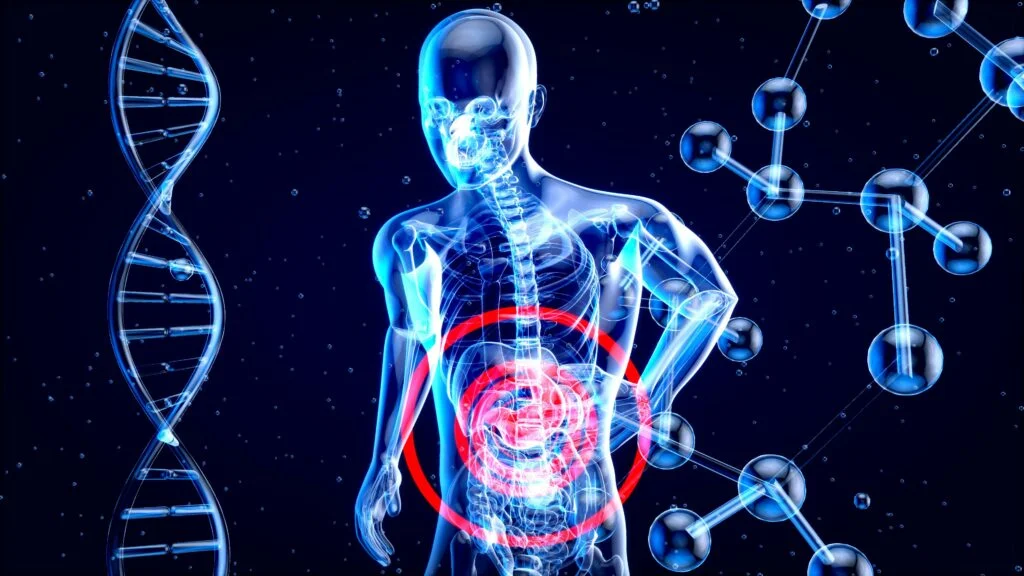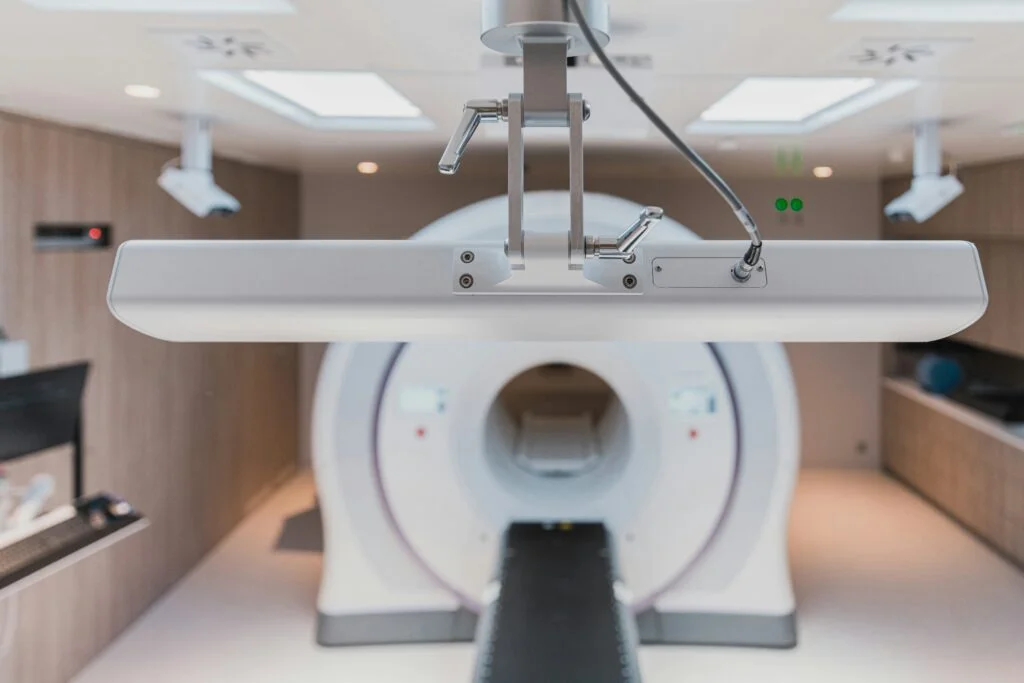A British doctor, Dr. William Morrant Baker, who was the first to observe it in the 19th century, is named after the cyst. This occurs when there is a surplus amount of the synovial fluid. It is a means for the joint to move and becomes sealed in a pocket lower than the knee. This phenomenon brings about swelling and anguish. However, there are also situations where the cyst remains unidentified as it is silent.
Even though a Baker's cyst is not a potentially severe condition, it might lead to severe disturbances in an individual's life. The swelling of the knee can inhibit its normal operations and cause a lot of pain, especially during exercises. The first and most important step in managing the situation well is to have a good understanding of the causes, symptoms, and therapies related to it.

Baker's cysts appear as a common phenomenon in all parts of the globe and are noticeable across every age group. Elderly individuals, however, constitute a major part of the suffering from this condition. This is because problems with the knee worsen as time goes on. In most cases, children are also at risk of the disorder, although they usually contract it through juvenile arthritis or other knee issues.
With the majority of cases likely to be misdiagnosed, the exact rate of Baker's cysts developing is not really known. A lot of people tend not to show clear symptoms or attribute a light, barely noticeable, but continuous discomfort to something else. Although it is true, the research mentions that a quite big number of people with knee joint problems, especially those having arthritis, have secondary cysts as well.
The actuality of the matter is that the overwhelming majority of the time, the Baker's cyst is not a scary thing people should be afraid of, and many do not experience a drop in their quality of life as a result. At the same time, they can be very annoying and unbearably painful. The location is crucial when it comes to the size of the cyst; the bigger it gets, the stronger the pain and limitation of movement you can expect, whereas the smaller ones leave you rather peaceful. Very occasionally, some problems might occur, for instance, and the sufferer might need to ask a doctor for assistance.
A cyst can be ruptured as a way of solving a similar problem. Pain, redness, and swelling are the symptoms seen when a cyst bursts and the liquid from it leaks out into the tissues surrounding the calf. The health condition known as deep vein thrombosis (DVT), which is a severe kind of blood clot that requires emergency medical attention, is a probability that could be confused with the condition. Furthermore, a Baker's cyst can also press against other tissues, such as veins and nerves, which can cause extra symptoms.
Baker's cyst usually results from joint problems in the knee, which is the most frequent. Arthritis, notably osteoarthritis and rheumatoid arthritis, is the common cause, and it gives rise to both swelling and synovial fluid amounts that are more than normal, which eventually may result in a cyst. Moreover, knee injuries such as meniscal tears and ligament injuries and the subsequent creation of a barium cyst due to the one-way valve mechanism, which traps the posterior joint fluid, are the factors that jointly account for this development.
Besides, some Baker's cysts result from the fact that the exact primary cause cannot be determined, which is quite rare. Some other factors, such as overuse, injuries connected with repetitive stress, and surgeries made characteristically, are also involved in the formation of the cyst. Identifying the exact cause is essential for choosing the right method of treatment.
Baker's cyst has quite a wide choice of signs and symptoms. It is because the cyst is quite large, and the underlying condition can vary. Realize that the small cysts may not present symptoms, which might come out at the time of the induction of an imaging study of patients for other causes. Bigger cysts typically cause pain and a tallness behind the knee.
The typical symptoms are a lump or a bulge at the upper back of the knee, which comes in two types, either soft or hard when you touch them. The knee is also painful or stiff, particularly during the activities performed in a bent or straightened position. Furthermore, some people may be obstructed by a feeling of tightness or fullness in the back of the knee. That can occur or worsen with prolonged standing or walking.
Pain will be caused when a cyst bursts in the knee of your calf muscle, nerves, or blood vessels. Discomfort often is accompanied by fever or a warmer or reddened skin area than normal. Pain may cause you to think that you are having blood clots. If so, you should immediately consult your first aid before the concerned doctor can treat you.

Generally speaking, Baker's cysts are harmless, but some tasks in the complications face may become more difficult. The cyst rupture is the major obstacle, which may produce a symptom that looks like that of deep vein thrombosis. It is important to understand that DVT is different from this disease. If it should occur, the ambulance should be used to save lives.
Trouble may occur when the cyst pushes on the veins or nerves; therefore, a complication can emerge. The first sign of the leg going numb, feeling funny, or even getting weak may happen. The leg may have numbness, tingling, or weakness, which may deter movement. In this case, it is probable that both the age-related knee phase (knee osteoarthritis) is exacerbated by the microfractures. – It may also result from the increased occurrence of stable degenerative cysts. Therapy should be administered in this way.
The first step in diagnosing Baker's cyst is a detailed medical history recording a doctor and a thorough physical examination. The presence of a soft and mushy mass behind the knee is typically a sign of the condition. The patient often complains of the following symptoms: knee pain or stiffness.
He sees objects or instruments in motion; thus, sonography should be a noninvasive method of looking for the development of Baker's cysts. It can visualize the fluid sac and differentiate it from other masses (lumps), such as tumors or blood clots. Ultrasound is the best. It is because it's a noninvasive procedure, widely available, and gives real-time images that help in the first evaluation.
Magnetic resonance imaging (MRI) is another valuable method for diagnosing Baker's cysts, requiring a detailed knee joint image. MRI creates a full picture of the joints of the knee, the cartilage, ligaments, and the surrounding soft tissues. Thus, it is a valuable tool for diagnosing underlying conditions. These include meniscal tears as well as ligament injuries, which may contribute to cyst formation.
In several cases, a doctor may carry out an aspiration process. It is done by picking a sample of the liquid from the cyst. The health expert inserts a needle into the cyst and pulls out the fluid for analysis. Fluid analysis can rule out any issues that can cause a Baker's cyst to look like an infection.
If they are not found, distinguish Baker's cysts from other illnesses that give the same symptoms, including deep vein thrombosis. In other words, tumors, including aneurysms, can cause similar symptoms to these cysts. This would require imaging studies. That is true, particularly in the case of similar conditions, such as imaging procedures and clinical examination, as mentioned earlier, techniques that could be combined. Also, the need to identify the problem among the many that might bring about the same/all of the symptoms is a must.

The treatment of patients with Baker's cysts varies with the level of their symptoms and the causes of these symptoms. The requirement that the patients not only fully comprehend the various risks and benefits of the proposed treatment but also have faith in the chosen approach is the next most important step. Under Conditions, non-surgical treatments are the only way to manage a cyst effectively.
Patients with mild symptoms that require a small break from the activities that cause the pain to be worse or that give the right to the knee or decide the teeth on their own may not need other treatments such as surgery. Moreover, with ice packs and leg elevation, inflammation and pain may also subside.
Before the surgical treatment is planned, an exercise program designed to improve the strength and flexibility of the patient's knee may be prescribed to alleviate the problem. A doctor may advise a patient to follow a series of articles focusing on joint stability and tension.
Medimucinum, a corticosteroid-based drug used to treat other inflammatory disorders, a similar but not a real medicine, was also suggested. Usually, this would entail the patient's case history, including images and any other determinants that surfaced.
He will have created the aspiration after the patient's probing, as there are no other headaches that lead the patient to doctors. If the patient prefers not to have arthroscopy, it is implied that the joint condition, which might lead to the return of the cyst and other issues, can be handled.
If the potential treatment approaches have been unsuccessful, or the cyst is causing severe complications, the patient may have to undergo surgery. However, in some cases, the therapy for the condition of mechanical origin, such as the removal of the cyst, can also prevent the recurrence.
Other than the style of swimming as opposed to running, swimming is better than heavier weight loads as well. Swimming and cycling exercises for people with joint problems are the best choice.
Even though Baker's cysts are often harmless and treatable, specific indications demand emergency medical treatment. If you suddenly experience intense and sharp pain in the back part of your knee or calf, followed by redness, hotness, or swelling, it might be a sign of a cyst rupture. The muscle can inflame neighboring issues and cause acute pain. In such a situation, the confirmation of the problem and suitable care is necessary.
It is also important to look for emergency care if a certain signal of deep vein thrombosis (DVT) is seen. It could confuse it with a ruptured Baker's cyst. Signs such as a big leg or any skin color, really blue, black, or green, together with difficulty in breathing, take a person to the clue of the existence of a blood clot, which is an emergency that needs dealing with. Also, when your leg suddenly becomes numb and tingling or you have difficulty walking, this might mean the cyst is pressing the blood vessels or nerves in that area.
Quite a few medical conditions could be diagnosed. However, the symptoms may appear like those of a Baker's cyst, which makes the diagnostic process very hard. Deep vein thrombosis is one of the diseases where a blood clot is formed in the veins of the leg. It can cause pain as well as swelling, and a reddening effect is noticeable. In most cases, they are similar to those seen on a ruptured Baker's cyst. That is why carrying out imaging tests such as Doppler ultrasound is essential.
A popliteal artery aneurysm is another condition that can be misdiagnosed as a Baker's cyst. This problem occurs when the artery keys the round back part of the knee. It may result in the formation of a shape similar to a cyst. Unlike Baker's cyst, which only swells up and heals, the popliteal artery aneurysm pulsates and requires a vascular doctor to diagnose it. Furthermore, soft tissue tumors, like lipomas or sarcomas, could also be a possible cause of the latter. These lumps might be hard to diagnose. They are indifferent to the fluid cyst. Therefore, to diagnose them, they will need to be screened with the help of an MRI. The correct diagnosis is to avoid the therapy.
For patient, not being free of symptoms is the hardest part of having a Baker's cyst. After some lifestyle modifications, patient can still deal with the problem and am happy. A specialized workout plan can cause the muscles around the knee to function better and allow the joint to be well-balanced. Swimming and yoga are less physical exercises that equally lead to reducing impacts on the knee, which causes pain and increases flexibility and strength.
Pain and swelling control, of course, needs to be considered as a part of living with Baker's cyst for each patient. Ice packs should be used on the wound; as the person rests, it can slowly be reduced. In case people who have asthma wait a little while, the pain will become disproved slightly with the help of over-the-counter painkillers such as ibuprofen. Also, wearing a knee support or elastic bandage could create a higher degree of comfort, and the people doing the everyday activities may not feel any discomfort. Weight management is also among the principal procedures that help reduce the disease's gravity. Besides, it is very recurrent in the future.
Emotionally, people suffering from such chronic conditions as a Baker's cyst are first. However, it is disgusting that they are completely disregarded. Support groups or counseling for those people with bad behaviors caused by the dysfunction may be helpful. The doctors and the whole hospital staff can hold seminars about the nature of Baker's cyst. They can instruct people to be more motivated to solve their troubles and thus have better quality of life.
Baker's cysts usually have a good prognosis. That is especially the case when doctors are able to find the cause of the cyst and repair it. Patients can have a complete recovery by simply resting for some time, using physical therapy, or taking medicines. A temporary condition, such as an acute knee injury, causes cysts. They will usually go away once the injury is healed.
At the same time, an indefinite outcome is also crucial and can be seriously affected by the deeper underlying problem with the knee. Recurring cysts are often the symptoms of diseases like osteoarthritis or rheumatoid arthritis, so curing these diseases is the only way to avoid the frequent appearance of cysts. The complex and persistent cysts that patients have to be removed by the operation if needed, on the one hand, and the relatively large ratio of full recovery of the patients with skilled and experienced surgeons, on the other hand.
Contrary to most people diagnosed with not having the problem any longer, there are people who, most of the time, will have to learn to live with the discomfort. The medical personnel have to look into the problem each time the patients come in for examinations or follow-up. Hence, they expect the most positive outcome.
One way to eliminate Baker's cysts is to tackle the problems that induce their formation. Maintaining healthy joints is the cornerstone of joint health. That is true, especially for those suffering from knee problems due to age, active lifestyle, or history of illness. Carrying out daily activities that enhance the muscles around the knee so the shift is avoided to the other knee joint, thereby decreasing the likelihood of developing cysts. Muscle-activating exercises, such as stretching or yoga, can also be done to prevent this from happening.
A further important means to avert the formation of such diseases is through the protection of the knee from injuries. Owning the correct footwear and applying effective skills while engaging in physical activities can lower the chances of knee injuries that could bring about the formation of cysts. For instance, sports people and the working class can incorporate warm-up and cool-down exercises to improve the knee joint. This will help the knee joint from overheating and fatigue.
For the ones who are already having arthritis and the like, managing them is already the mainstay in the fight against Baker's cysts. This can imply sticking to what the physician has prescribed. These include taking daily prescribed treatments to suppress inflammation or regular physical therapy sessions, while others may need these. Receiving early treatment for knee pain or stiffness is also a way by which one can avoid the injuries that lead to cyst formation.
Table of Contents